The Road to Kouonji Temple, Temple No. 61
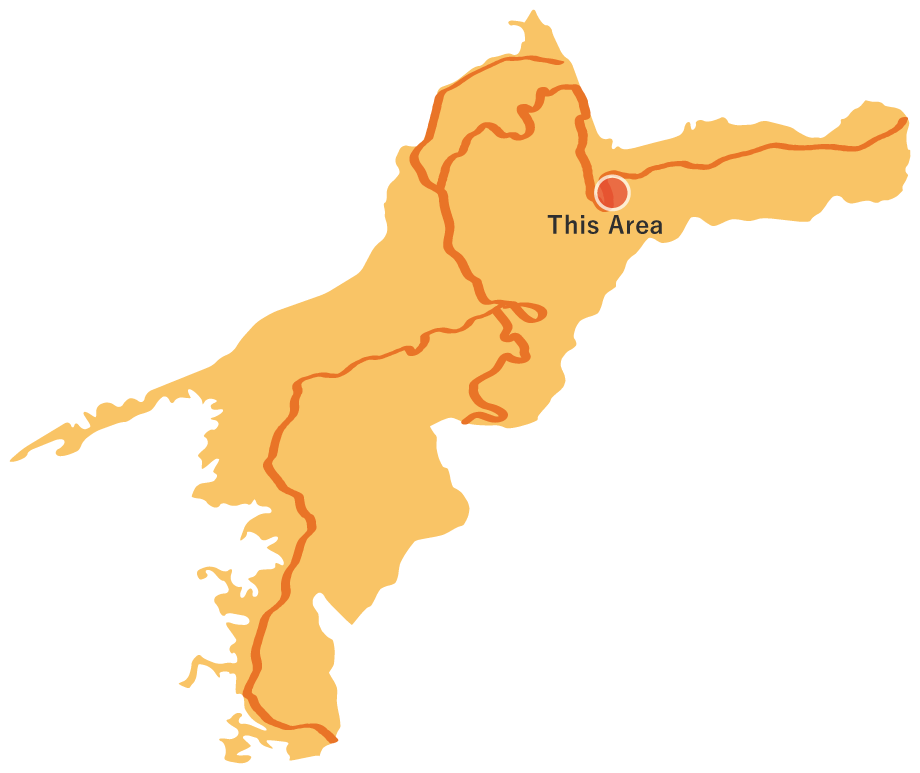
The Road to Kouonji Temple, Temple No. 61
This route descends along the ridge from Yokomineji Temple No. 60 (750 m above sea level), to Kouonji Temple No. 61. This is a remote and mountainous route up to Ootani Pond, followed by an 11.6-km route through a residential area in the Komatsu countryside.
The Road to Kouonji Temple, Temple No. 61(11.6km)

 Spots to photograph
Spots to photograph
If you wish to receive a certificate, please take a photo that includes yourself at the designated photo point for each course.
Nearby sightseeing spots

-
1
 Crossroads with a forest trail
Crossroads with a forest trailAt about 1.2 km from Yokomineji Temple No. 60, the trail splits off from the forest trail and enters a mountain road. From here, the trail of 5.7 km continues up and down along the ridge to the inner sanctuary of Kouenji Temple.
-
2
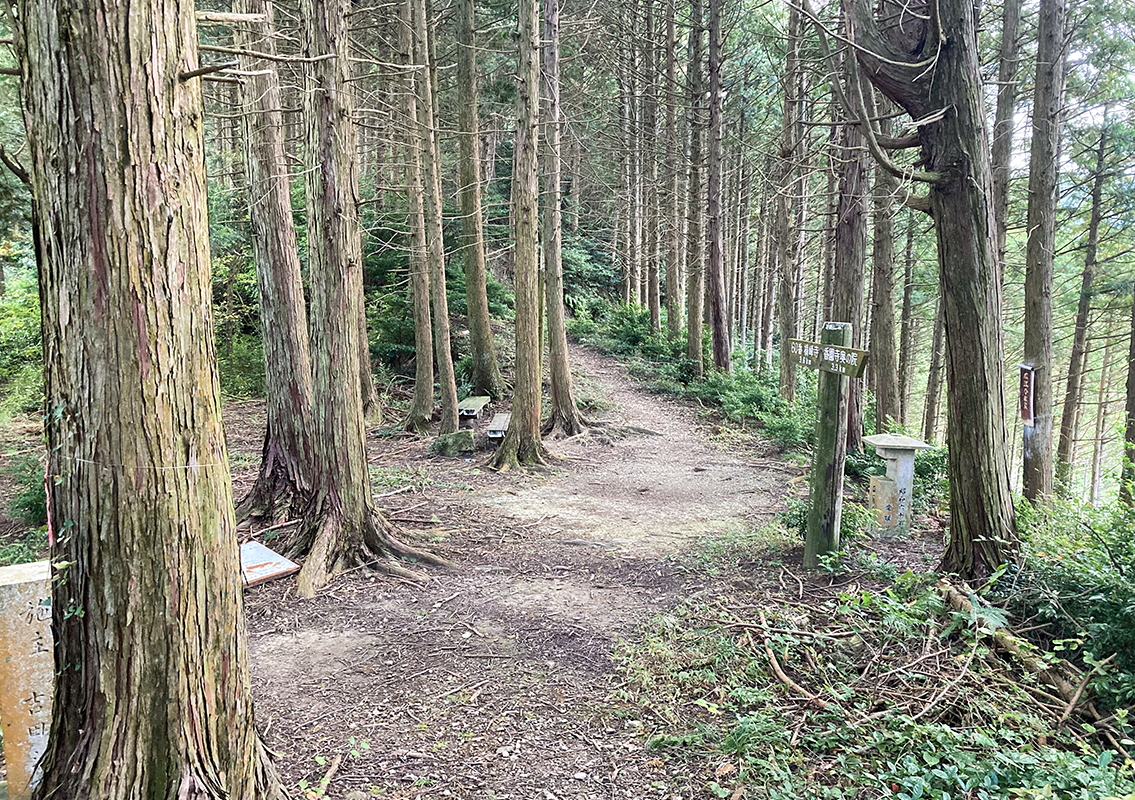 Road along the ridge
Road along the ridgeThis well-maintained path through the cedar forest is pleasant, with occasional glimpses of the mountain range of Saijo. Benches along the long trail help to take short breaks.
-
3
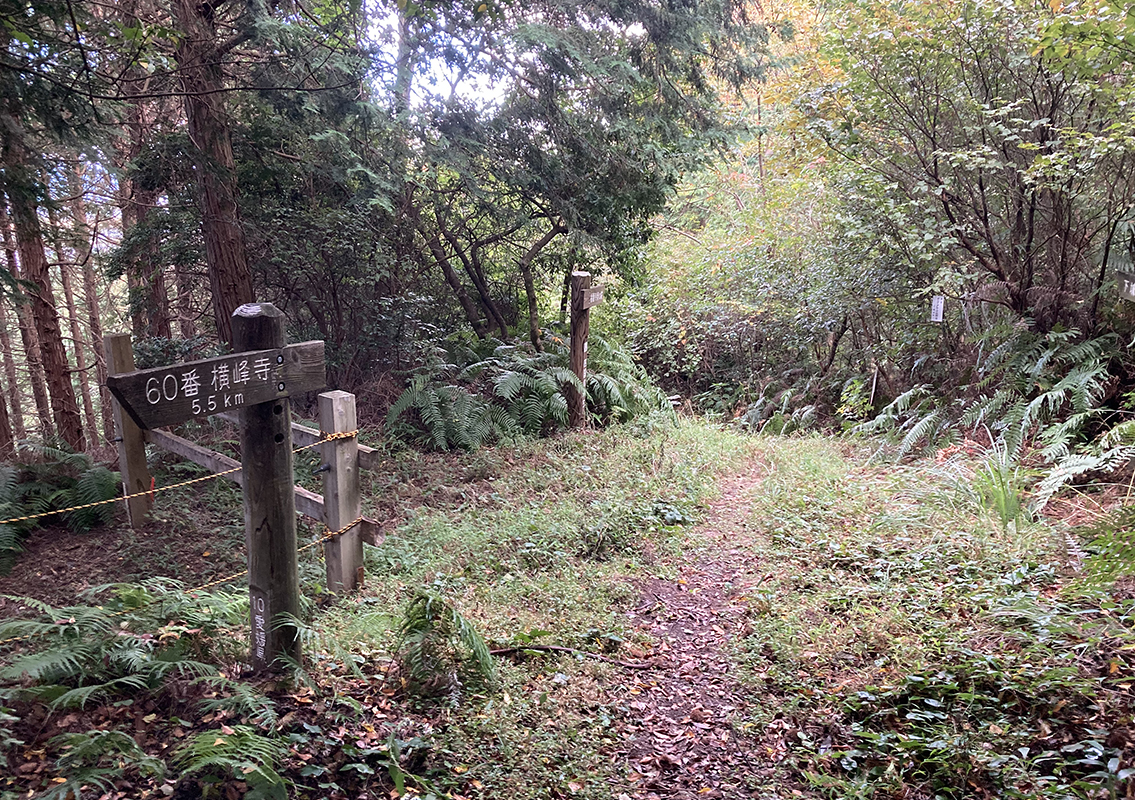 Road closure
Road closureThe Shikoku no Michi and the Shikoku pilgrim route formerly separated here, but they closed for passerby and blocked off by barricades around 2014. You might want to check if you’re holding an old map while passing this route. The Shikoku no Michi and the Shikoku pilgrimage route are now the same and directions are included in pilgrimage route.
-
4
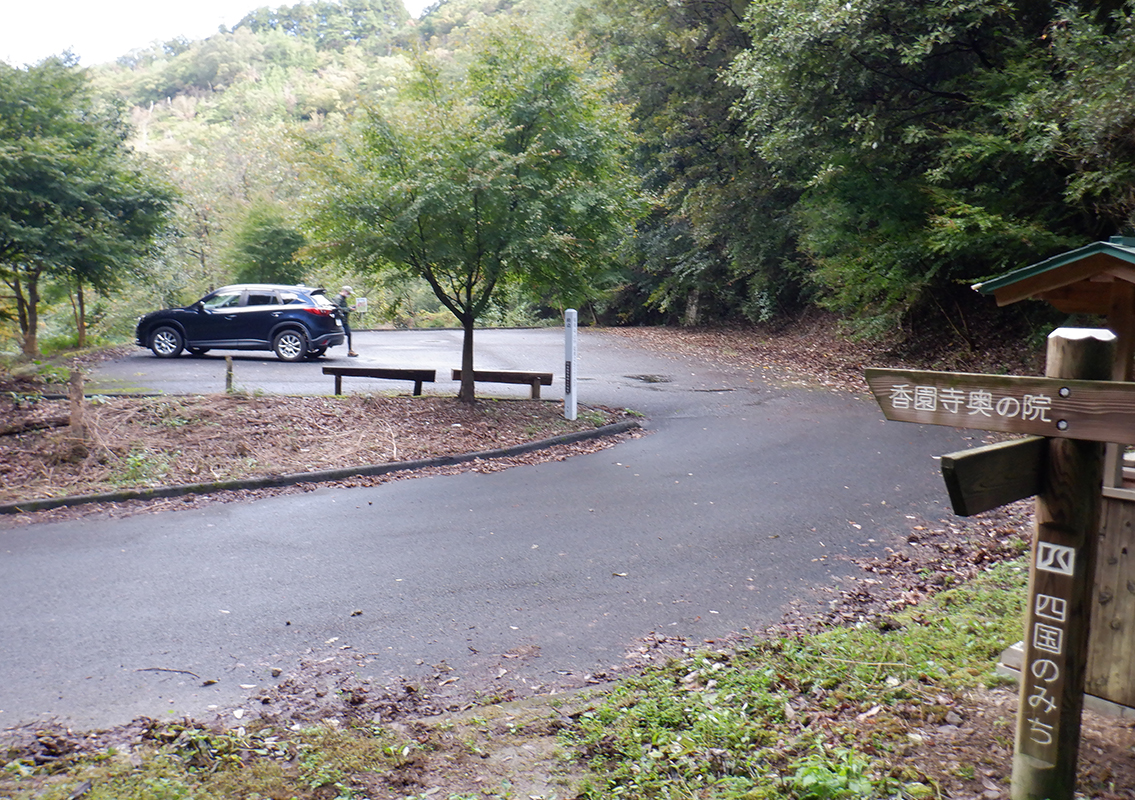 Parking lot
Parking lotThe mountain road leads down to a paved road. This place can accommodate parking space for about 10 cars. The distance to the inner sanctuary of Kouenji Temple is just over 1 km.
-
5
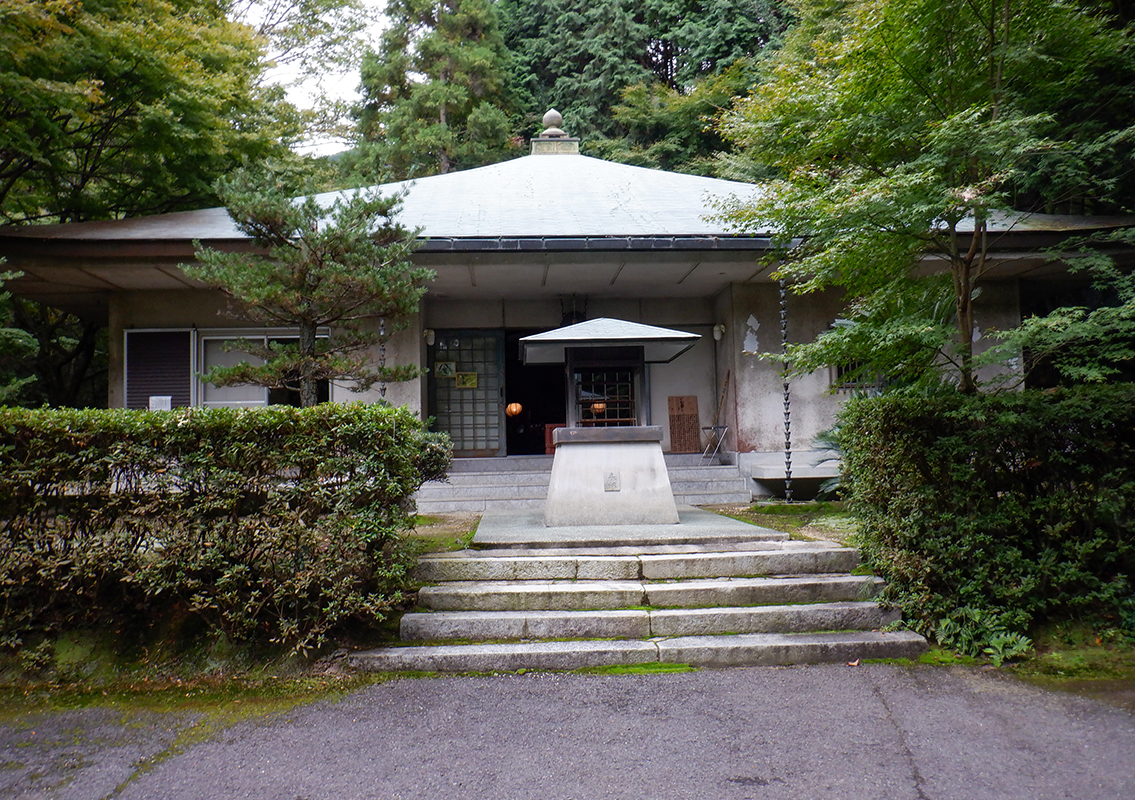 Kouonji Okuno-in Temple
Kouonji Okuno-in TempleThe Temple was founded in 1933, and its principal deity is Fudo Myoo. Further on from Okuno-in Temple is a small waterfall named Shirataki. Along with cold water ablutions, the waterfall is famous for its attractive fall colors. Numerous visitors enjoy strolling along the path full of colorful leaves in Autumn.
-
6
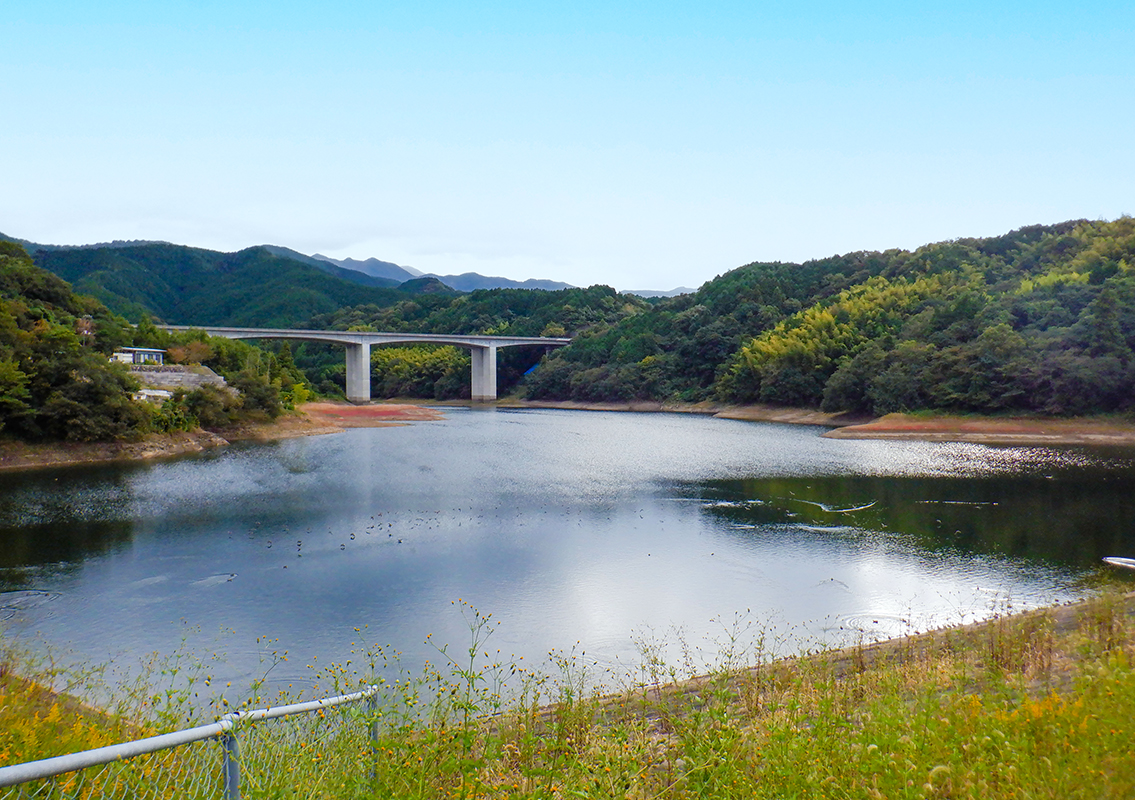 Ootani Pond
Ootani PondOotani Pond, which is the third largest reservoir in the prefecture was built in 1920 to resolve the shortage of irrigation water at the beginning of the Taisho era. Over the years, renovation work was carried out from 2000 to 2007. A trail down to the foot of the bank leads to a bricked sluice gate that was in use until 2007. This sluice gate is registered as a “Modern Civil Engineering Heritage of Japan” by the Japan Society of Civil Engineers.
-
7
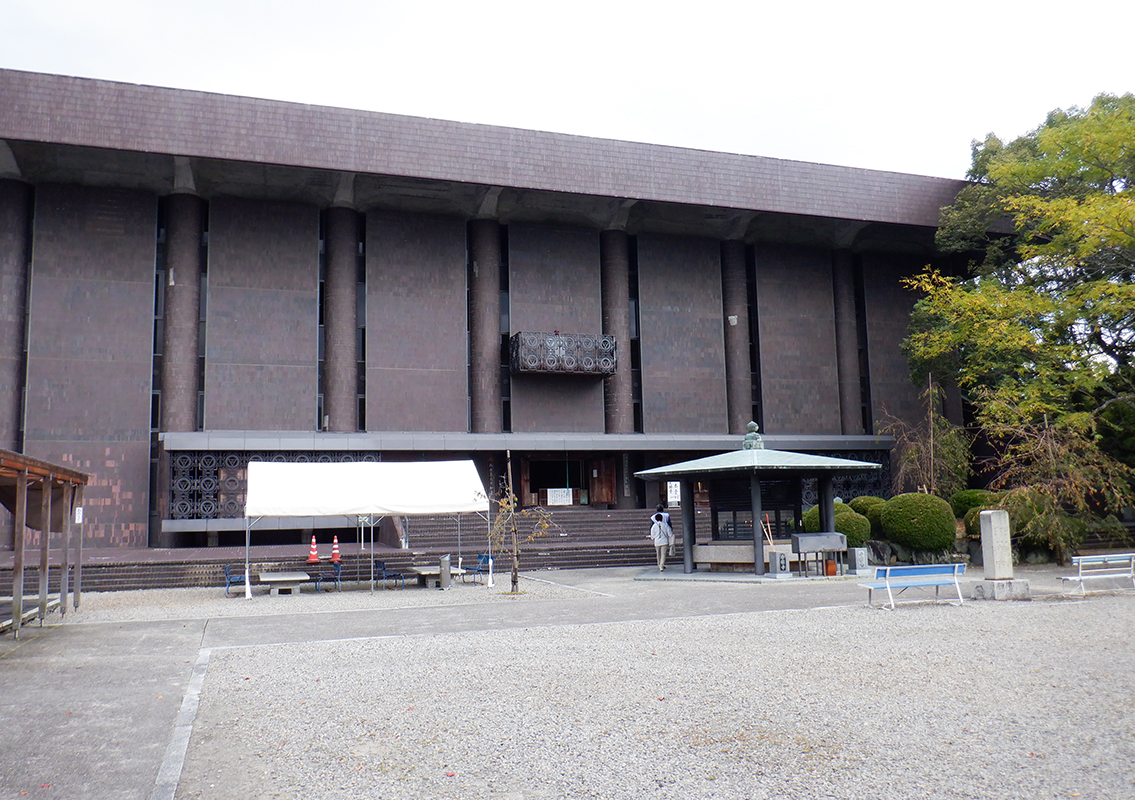 Fudasho Kouokji Temple No. 61
Fudasho Kouokji Temple No. 61Kouonji Temple No. 61 was founded by Prince Shotoku to pray for the health of Emperor Yomei (585-587). When Kobo Daishi was on his pilgrimage to Shikoku, he came to the base of this temple and happened to see a woman suffering from a difficult childbirth. There, Kobo Daishi introduced to the temple the four vows of easy childbirth, child rearing, surrogacy, and women becoming Buddha, along with the secret techniques of praying. This is why the side deity, Koyasudaiji is believed to be responsible for safe childbirth and child-rearing, though the main deity is Dainichi Nyorai. Many visitors pray for a safe childbirth on dog day (summer months). The modern cathedral, which serves as both the main hall and the grand hall is impressive to many visitors.
-
8
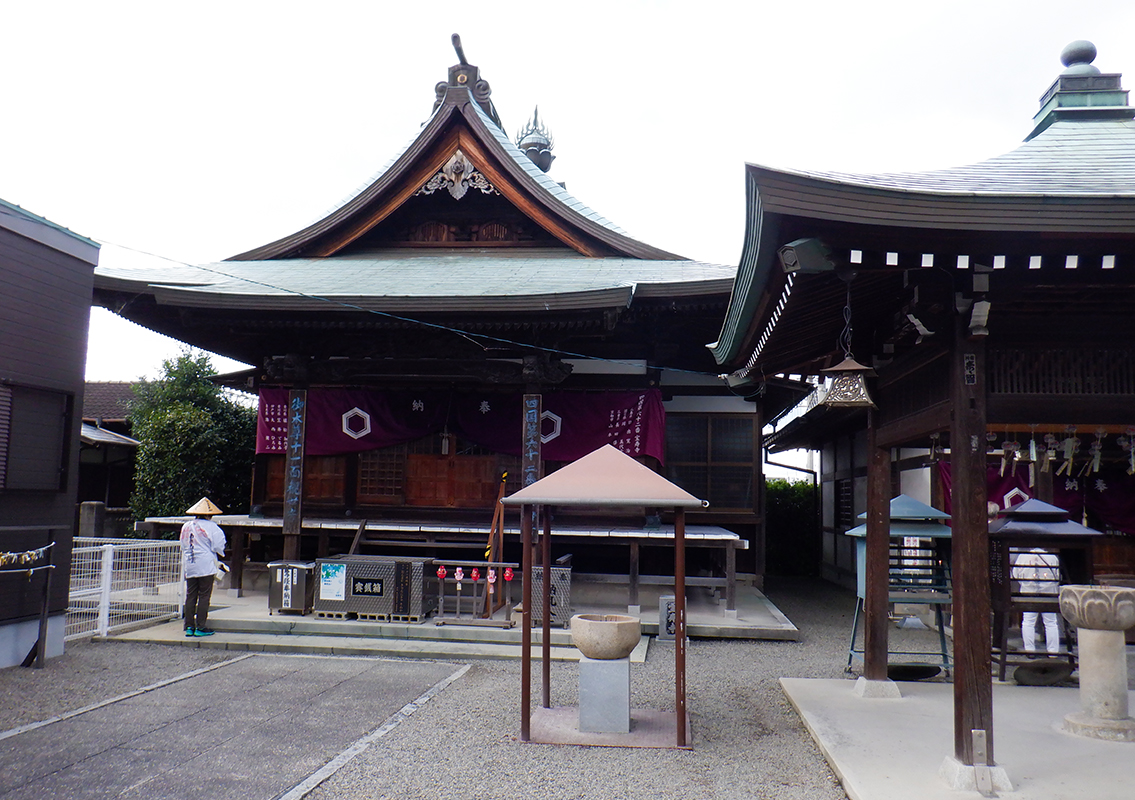 Fudasho Hojuji Temple No. 62
Fudasho Hojuji Temple No. 62The temple was built by Emperor Shomu (724-749) during the Tempyo period. In later years, Kobo Daishi carved a statue of the eleven-faced Kannon (Goddess of Mercy) as the deity of the temple and renamed it Hoshuji Temple. The Goddess of Mercy has been worshipped for safe childbirth ever since.



